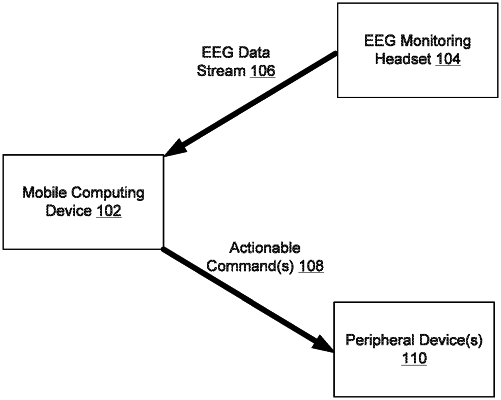| CPC G05B 19/4155 (2013.01) [B25J 9/0006 (2013.01); B25J 9/1656 (2013.01); B25J 13/00 (2013.01); G06F 3/015 (2013.01); G05B 2219/39292 (2013.01)] | 19 Claims |

|
1. A mobile computing device comprising:
at least one processor configured to execute instructions from one or more modules, the one or more modules comprising:
an EEG signal reading module configured to receive an incoming communication signal comprising an EEG data stream;
an external device control module configured to:
determine at least one actionable command;
transmit a first communication signal to a robotic device based on the at least one actionable command to cause active operation of the robotic device; and
transmit a second communication signal to a sensory feedback device to cause the sensory feedback device to provide tactile feedback during operation of the robotic device;
a feedback receiving module; and
an avatar generation module, and
a display.
|